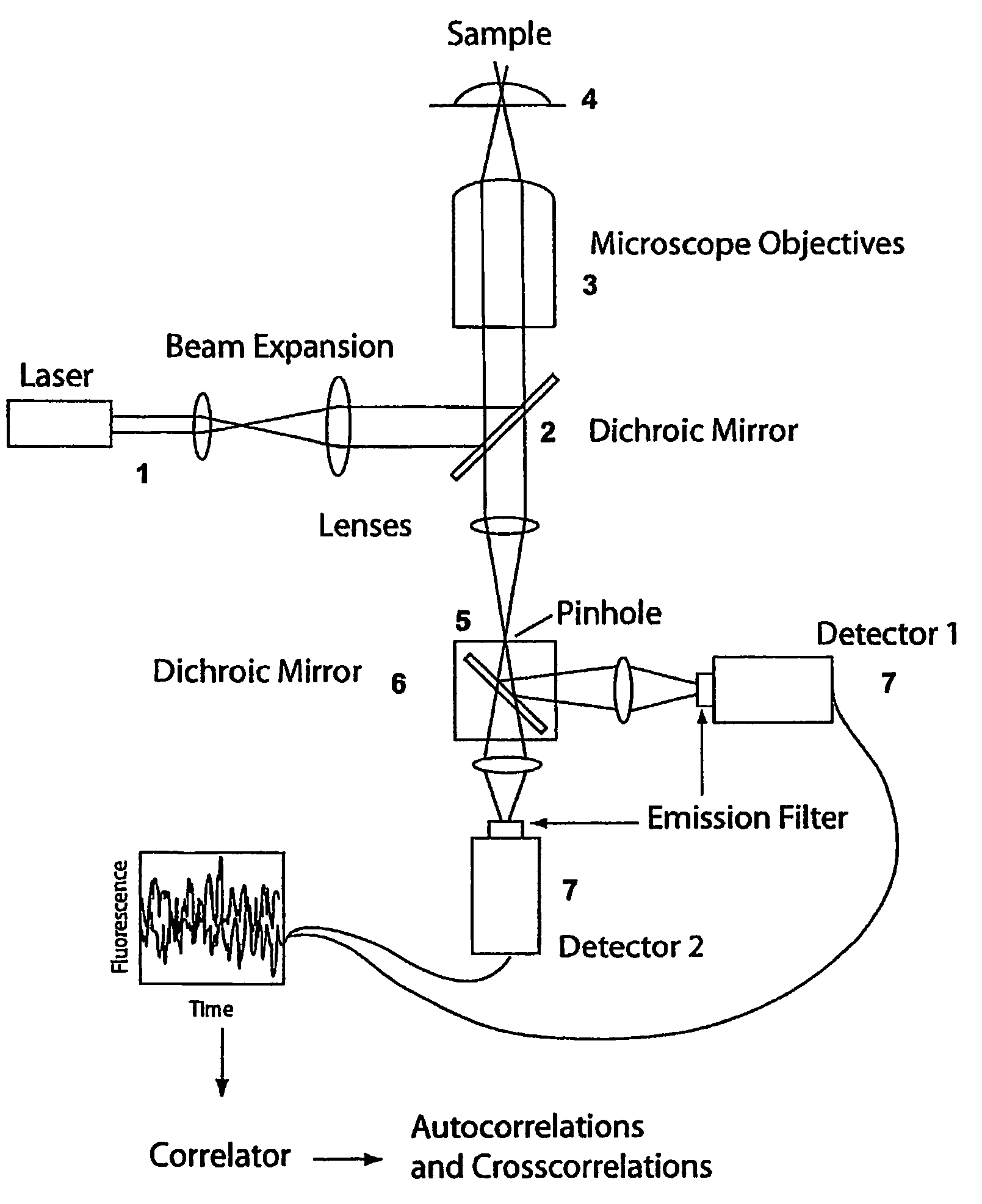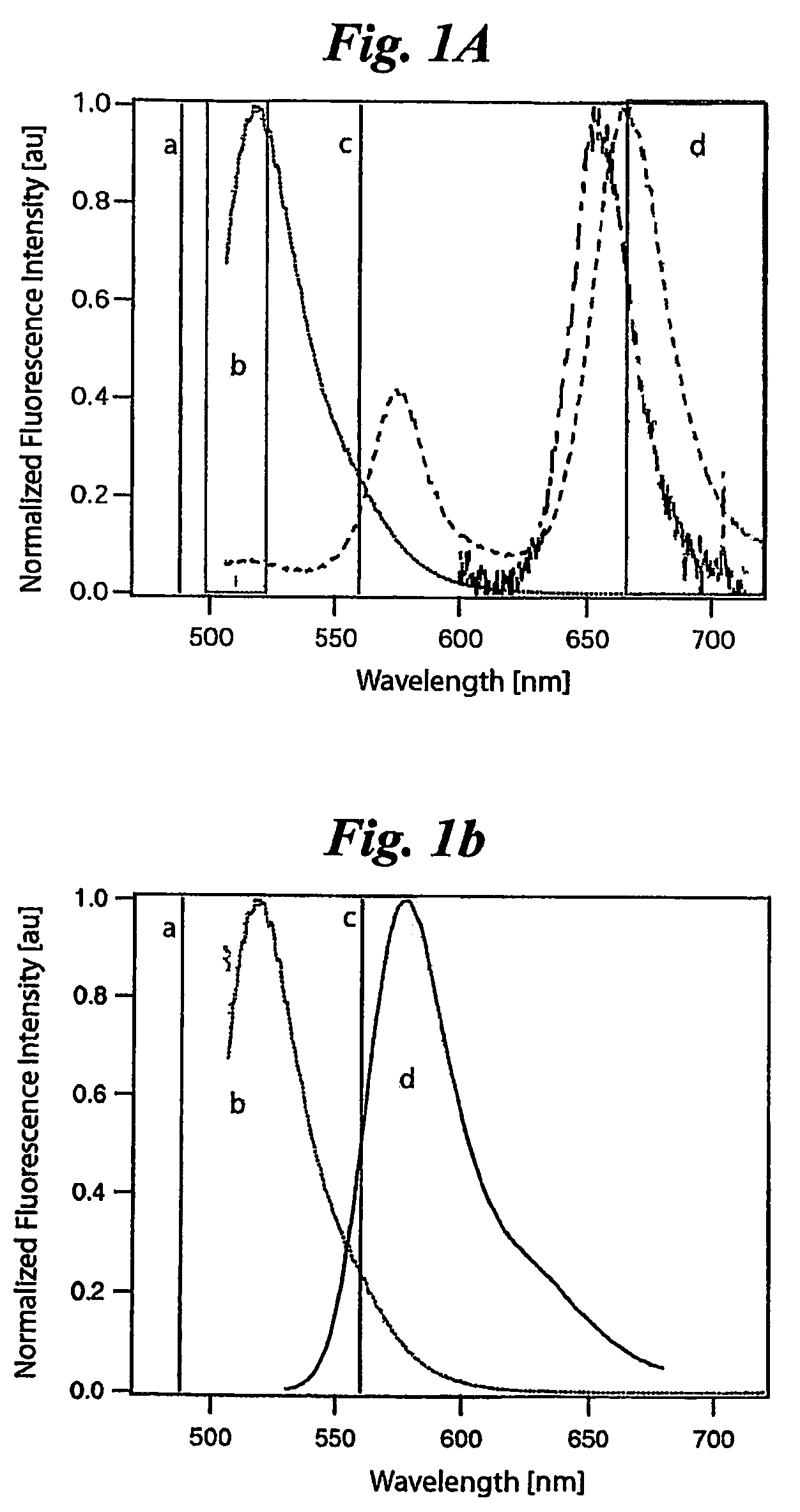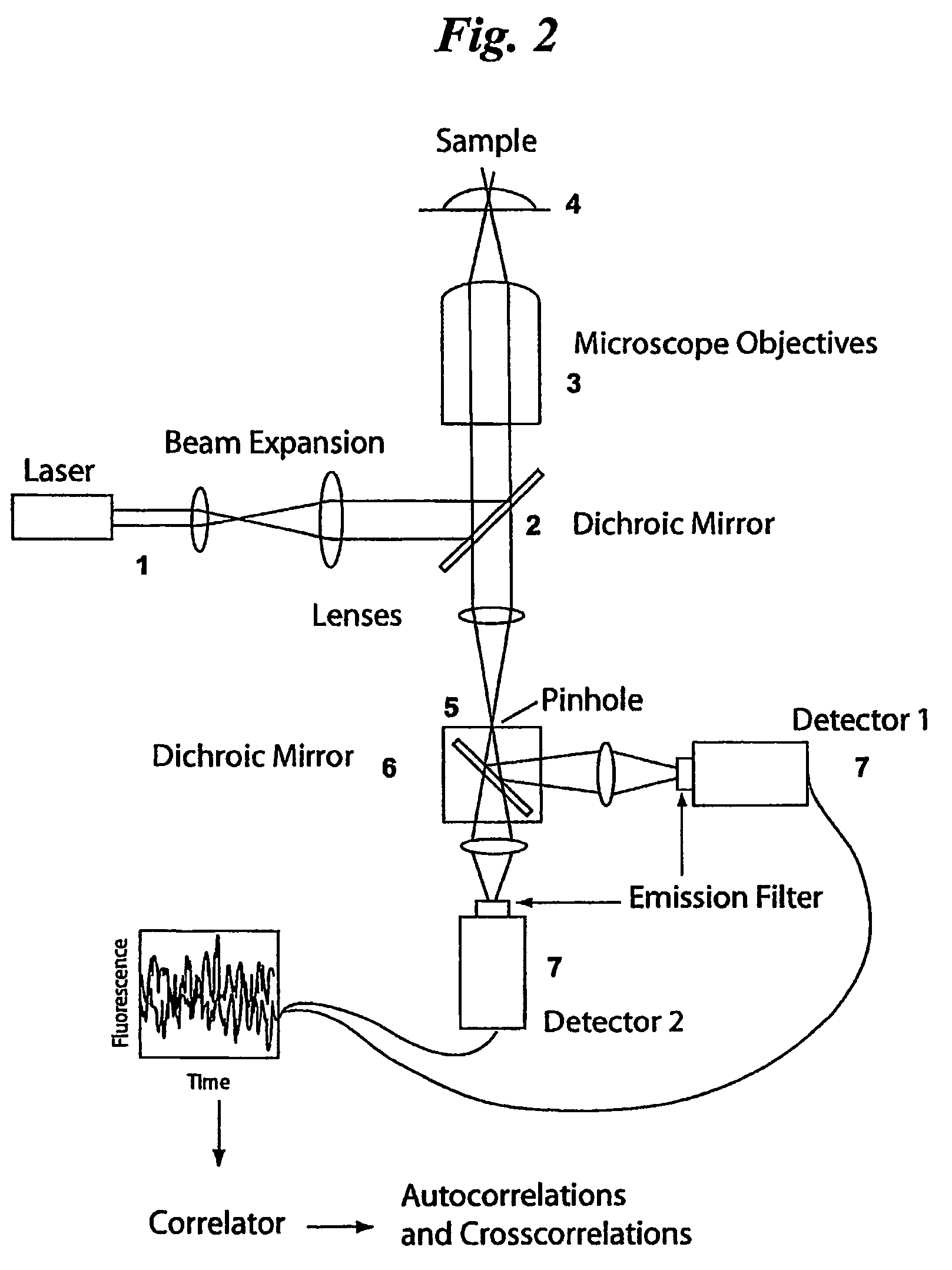Fluorescence correlation spectroscopy with single excitation wavelength
a technology of fluorescence correlation and single excitation wavelength, which is applied in the field of multicolor cross-correlation spectroscopy, can solve the problems of limiting the commercial and scientific exploitation of this technique, the cost of the system and the inability to find fluorophores with adequate two-photon absorption cross sections, and the inability to find appropriate dyes
- Summary
- Abstract
- Description
- Claims
- Application Information
AI Technical Summary
Benefits of technology
Problems solved by technology
Method used
Image
Examples
example
The Biotin-Streptavidin Ligand-Receptor System
[0094]The biotin-streptavidin ligand-receptor system is a well studied model system for ligand receptor interaction. In our case we use fluorescein labeled biotin (BF) and tetramethylrhodamine labeled streptavidin (TMRSA). There are several points in this system that considerably simplify the expression for the fluorescence intensity (Eq. 2) and thus the CCF (eqs. 3 and 4):
[0095]i) The fluorescence of TMRSA is not dependent on BF binding and no FRET was observed (data not shown). Thus all ηRLn*i are equal and can be written as ηRi.
[0096]These two conditions lead to a simplification of Eq. 2:
[0097]Fi(t)=ηLicL+∑n*ηLn*lcLn*+ηRicR+∑n*(ηLn*Ri+ηRi)cRLn*(17)
ii) The fluorescence of BF is quenched by 75% upon binding (see Gruber, H. J., Kada, G., Marek, M., and Kaiser, K., BBA-Gen. Subjects 1381 (2), 203 (1998); 20. Kada, G., Kaiser, K., Falk, H., and Gruber, H. J., BBA-Gen. Subjects 1427 (1), 44 (1999)), but it is not dependent on the...
PUM
| Property | Measurement | Unit |
|---|---|---|
| single-photon excitation wavelength | aaaaa | aaaaa |
| emission wavelengths | aaaaa | aaaaa |
| fluorescence correlation spectroscopic | aaaaa | aaaaa |
Abstract
Description
Claims
Application Information
 Login to View More
Login to View More - R&D
- Intellectual Property
- Life Sciences
- Materials
- Tech Scout
- Unparalleled Data Quality
- Higher Quality Content
- 60% Fewer Hallucinations
Browse by: Latest US Patents, China's latest patents, Technical Efficacy Thesaurus, Application Domain, Technology Topic, Popular Technical Reports.
© 2025 PatSnap. All rights reserved.Legal|Privacy policy|Modern Slavery Act Transparency Statement|Sitemap|About US| Contact US: help@patsnap.com



